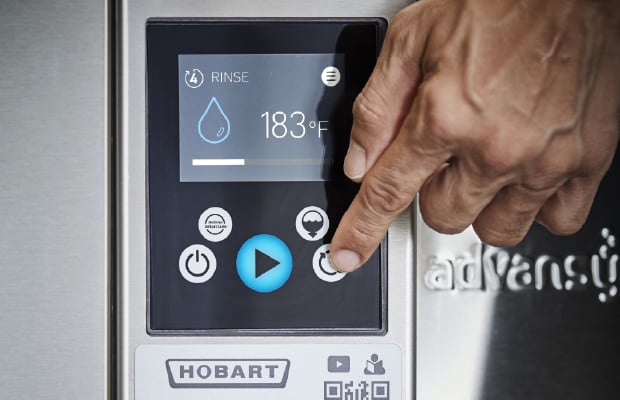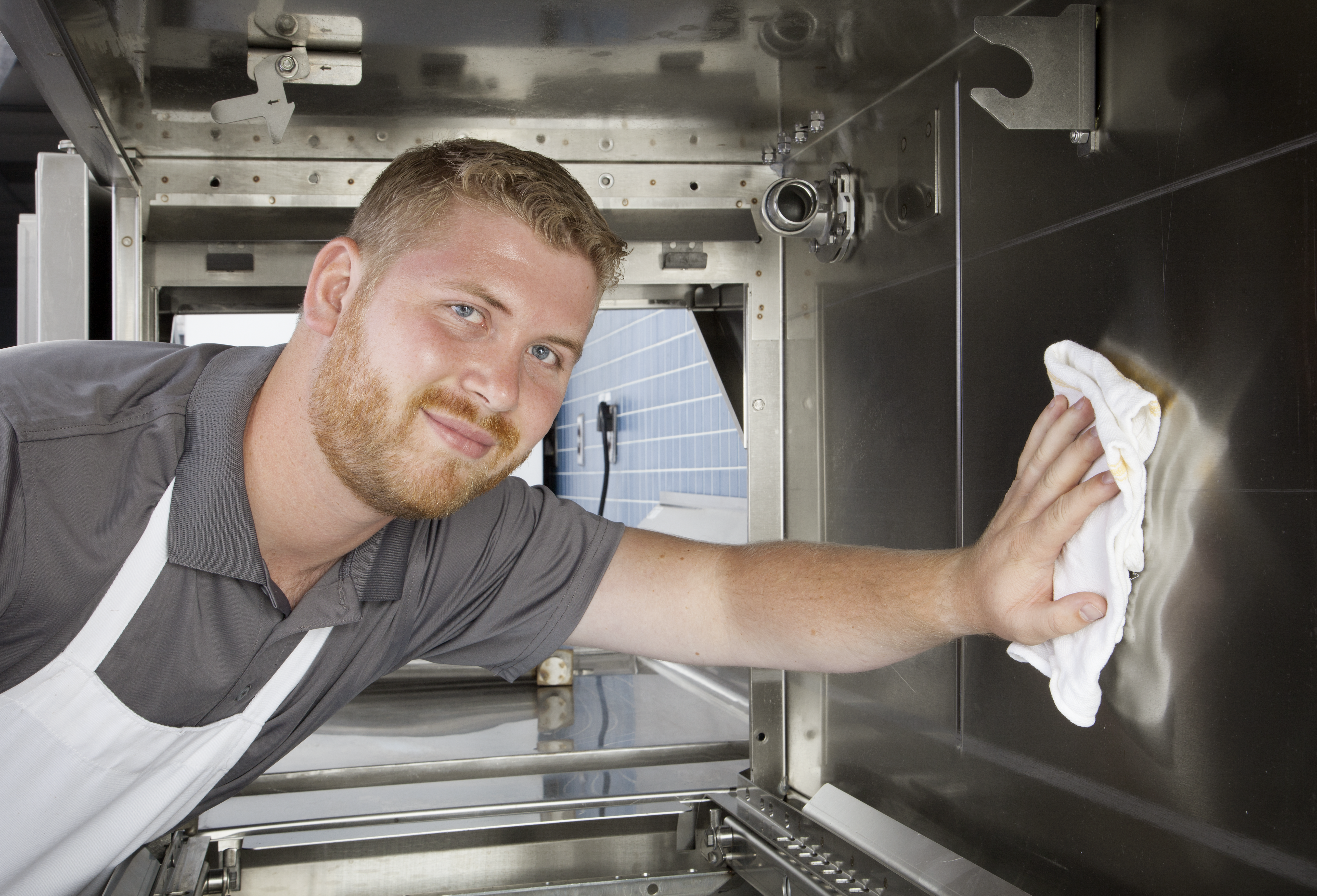Foodservice operations in K-12 schools have evolved significantly over the last several years due to changing nutrition requirements, staffing cuts, environmental concerns, and more. One issue that continues to be debated by cafeteria managers and others is whether to use reusable or disposable ware.
It’s fair to say most schools already offer a combination of reusable and disposable items, with trays and prep ware making up the majority of the reusables. The question is, which option should be primarily used and why?
There’s no easy answer, as K-12 foodservice operations vary widely in regard to volume, equipment and budgets. However, the School Nutrition Association published a study that analyzed sample of elementary, middle school and high school cafeterias to help nutrition directors get to the bottom of this conundrum. The result? Washing reusable trays was more cost effective than buying and throwing out disposable serving ware.
But what if a school district balks at the idea of investing in a commercial dishwasher? It’s important to note that while the upfront costs of a dishmachine or prep washer may seem significant, the operation will likely save money in the long run.
Current Practices
Still, disposable ware seems convenient because it doesn’t have to be washed. But, continually buying and throwing away paper, cardboard, or plastic items may not be cost effective over time. In addition, discarding large amounts of materials leads to concern about environmental impacts.
Winnie Brewer is a Food and Nutrition Services Director at a school district in Ohio and she discovered both a financial and environmental benefit to making the switch to using more plastic trays for school lunches. “We were able to downsize the cubic footage of our trash containers when we switched from disposable lunch trays to reusable lunch trays,” said Brewer. “And, we were able to afford an additional three-hour person in each building. I would much rather invest in human capital than contribute to the landfills!”
When considering both cost and environmental issues, it makes sense for school cafeterias to use commercial dishwashers, especially since today’s models are more energy efficient than they’ve ever been.
In fact, the SNA study found that using a newer model commercial dishwasher can reduce rinse water usage and energy consumption by nearly 50 percent over an older model machine. And, that can add up to a $1,300 savings per 100,000 meals served.
Tim Christianson is a Partner at HRI, Inc., a company that provides Foodservice Equipment Manufacturer Reps to the foodservice industry. He works with several K-12 school cafeterias to find workable commercial dishwasher solutions. And, he’s noticed several ways in which schools are dealing with disposables versus reusables.
“Not many schools do just disposables,” explained Christianson. “Most schools I work with in Indiana have commercial dishwashers.”
Christianson went on to explain that the reusable ware being washed varies based on whether the school is elementary, junior high, or high school.
“For example, what I’m seeing more in high schools is that they’re getting away from compartmentalized trays,” he said. “They’re going more towards presenting foods in containers, like a cardboard bowl. And the containers are carried on a flat tray. All schools doing the disposable containers are still using a flat plastic tray that needs to be washed.”
So, the strategy of using a mix of disposable ware and reusable items means that plastic trays and the prep ware needed to provide required fruits and vegetables still need to be washed. Should foodservice operations turn to newer-model replacement dishwashers or try to manage the cleaning and sanitizing process with the labor-intensive three-sink process?
This is the million-dollar question and one that probably should be answered by considering total cost of ownership related to the machine, in the form of:
- Machine Cost
- Labor
- Water/Energy Efficiency
Return on Investment
How long will it take for you to recoup the investment you’ve made in your commercial dishmachine? Not as long as you might think. Many technological advances (energy recovery, soil removal and rinse spray optimization) have hit the market throughout the past decade, driven by the green - sustainability movement, with a key emphasis on water and energy conservation. These innovations have drastically reduced the environmental footprint of automated dishwashers, which in turn has significantly reduced the financial burden previously experienced by end users.
When compared to aging equipment, a new machine purchase typically pays for its self within 18-24 months. And, the savings aren’t only limited to water and energy, but can also materialize in chemical expenses as well. Ask your dishwasher manufacturer’s rep about performing a total cost of ownership study before your machine purchase, and you might be pleasantly surprised at the outcome.
Labor Considerations
According to a USDA FY2016 preliminary study, nearly 100,000 schools/institutions serve school lunches to 30.4 million students each day, with 5 billion lunches are served annually. If we know there’s likely a mix of disposable and reusable ware in these cafeterias, what is the driving force behind deciding to lean more heavily toward one or the other?
“The labor is the biggest piece of the puzzle,” stated Christianson. “Most schools don’t have full-time dishwashers. People float from prep to wash and the speed at which everything gets done is very important.”
Efficiency
One solution that fits in nicely with a typical K-12 foodservice operation is an automatic prep washer. For instance, the Advansys™ line of Hobart PW Prep washers are ENERGY STAR® Certified and offer the exclusive Energy Recovery system on the PW10eR and PW20eR models.
What makes Energy Recovery technology so desirable? First, the Energy Recovery system runs on a kitchen’s cold water line, resulting in an approximate $1,500 savings in energy costs. Secondly, a vent hood is not required, and this is good news considering additional duct work is sometimes necessary in addition to the purchase of a vent hood.
Because a K-12 foodservice operation is likely working under a tight budget, an energy-efficient, automatic prep washer can be a welcome addition to a kitchen that needs to clean and sanitize several loads of trays and prep ware. In addition, a newer-model automatic prep washer can easily be operated using the popular labor practice of a cross-functional team.
Foodservice Perception
Need something else to consider when working through the best way to manage a school cafeteria’s reusable/disposable ware mix? Think presentation. In other words, how the cafeteria meals are presented to students makes a difference to the sustainability of the operation. Kids today are often aware of environmental impacts surrounding certain throw-away materials like Styrofoam and may avoid purchasing items with these types of containers.
In fact, Christianson shared a story about an elementary school cafeteria he worked with that had a temporarily disabled automatic dishwasher. The school changed over to Styrofoam food containers instead of reusable trays and the students became concerned about the amount of trash being thrown away. The kids went so far as to perform a study of how many pieces of Styrofoam from their lunches were ending up in local landfills. The school eventually repaired their dishwasher and went back to serving meals on reusable trays.
Remember, the SNA study concluded that washing reusable trays was a more cost-effective option than using disposable serving ware. When applying this finding to a commercial dishwasher purchasing decision, consider this: The SNA study found that using a mix of disposables, reusable trays and a newer, energy efficient dishwasher model resulted in lower energy requirements than using only reusables with a less-efficient dishwasher.
Finding a Solution that Works with the Budget
The reality is there isn’t a one-size-fits-all system when it comes to reusable versus disposable ware in K-12 cafeterias. While most schools may stick to a mix, the SNA Study and other data show that investing in a commercial warewasher is the best bet when it comes to saving money over time, as well as increasing overall operation efficiency.
See the Life Cycle Environmental and Cost Analysis of Disposable and Reusable Ware in School Cafeterias Summary (SNA Study) at https://www.thegreenteam.org/wp-content/uploads/2014/04/Warewash_Study-Summary.pdf





.png)


%20proc%20%20(1).jpg)


